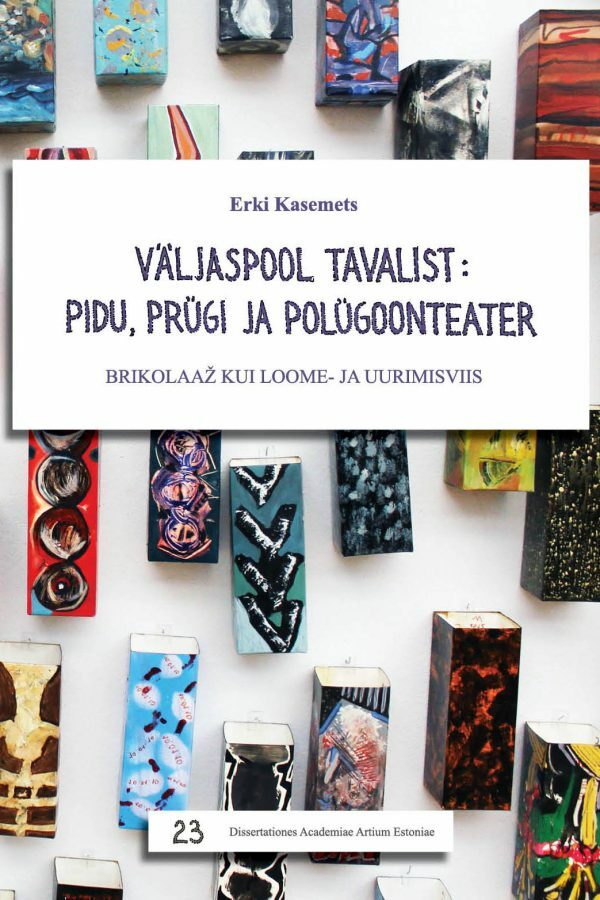
Erki Kasemets’s artistic research attempts to perceive and describe the cohesive horizon of the author’s self-perception as the widest background system. The three different art projects realized for this purpose: the performance “PMV”, the video work “Improvement” and the exhibition “Crazy Days” are essentially summary works that gather traces of previous creative ideas and activities. The research asks, to what extent and how are more general tendencies revealed through art projects that connect the researched works to the artist’s previous and possible future creative activities? What’s in that always-on toolbox? Placing himself in the role of a bystander and an autoethnographic source, the author tries to observe what is being done from outside the habitual position. Adopting a bricolage approach, a helper is built to answer the questions – a matrix with three rows and columns filled with source data. The first column is formed by the titles of observed, already realized art projects, the second column contains more hollow signifiers, three researched concepts, “party”, “garbage” and “polygon theater”, which have the prerequisites to become cores of self-understanding. The so-called filters highlighting social relationships, self-drawing, everyday and a(s) history are placed in the third column. With the help of the matrix, it is possible to create different interpretation communities and see the relationships between the elements emerging there. It is possible to generate table combinations endlessly and circularly, the meanings are manifested each time as self-similar associations.
Supervisors: Dr. Juha Varto, Dr. Aili Aarelaid and Dr. Liina Unt
Preliminary reviewers: Dr. Luule Epner (Tallinn University) and Dr. Anu Allas (Estonian Art Museum)
Opponent: Dr. Luule Epner (Tallinn University)
Language editor: Mari Tuuling
Translation: Maris Karjatse
Design: Villu Plink, Erki Kasemets
Dissertationes Academiae Artium Estoniae 23
124 pages, in Estonian, with an English summary
Estonian Academy of Arts, 2017
ISBN 978-9949-594-49-8
ISSN 1736-2261
